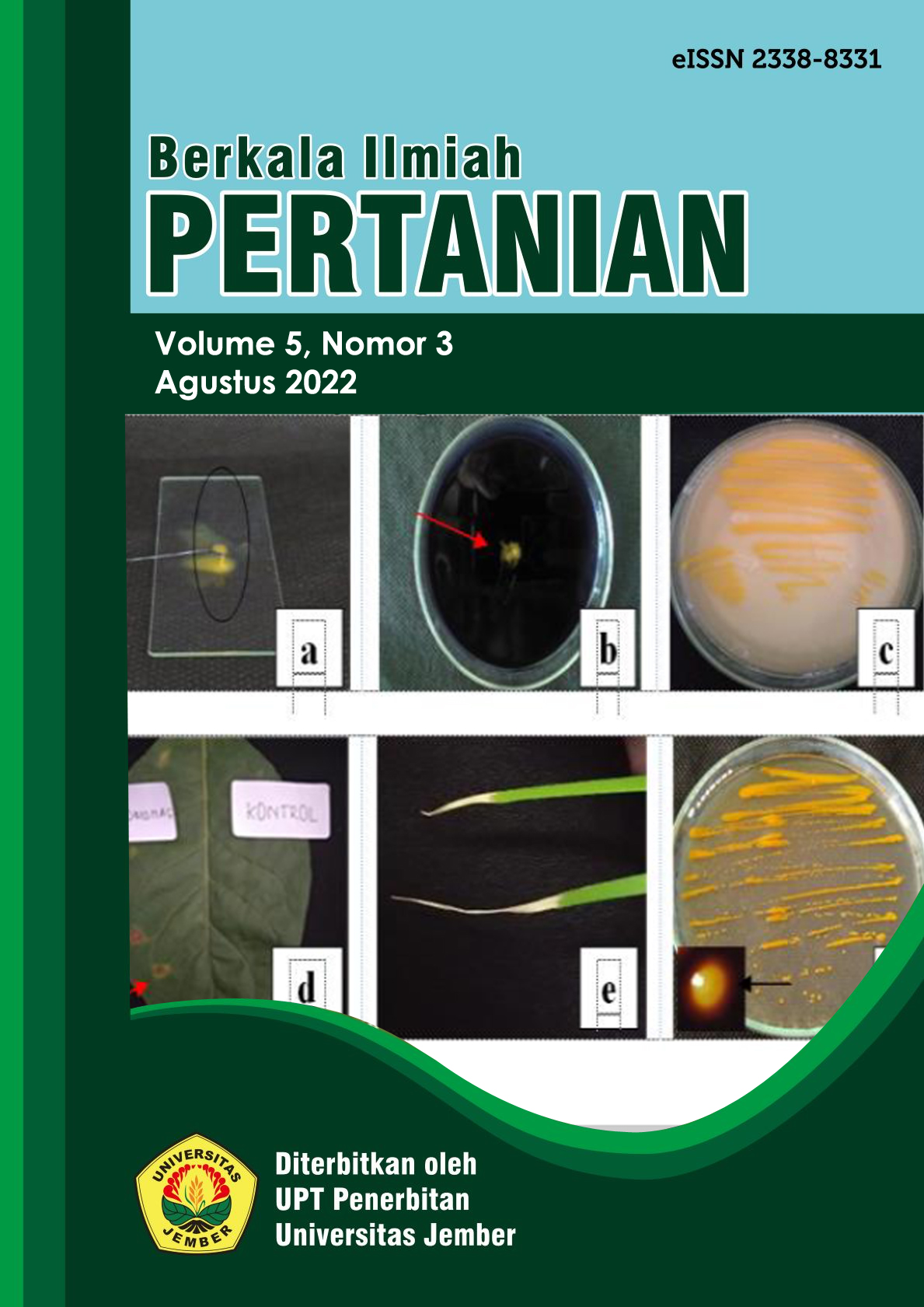The Growth and Yield of The Radishes (Raphanus Sativus L.) to doses of nitrogen fertilizer and Potassium fertilizer
RESPON PERTUMBUHAN DAN HASIL TANAMAN LOBAK (RAPHANUS SATIVUS L.) TERHADAP DOSIS PUPUK NITROGEN DAN PUPUK KALIUM
Abstract
The Radish (rhaphanus sativus l.) is a horticultural plant that enters into the bulbous bulbous variety. Radish
productivity has always decreased by 2.16%, although in 2016 its productivity increased by 0.11% but it was still lower in
production (Agricultural Statistics Center, 2017). The low production of turnips is caused by highlanders and few problems
of fertilizing them. One attempt to improve the production of focused turnips on growing them at higher altitudes by
expanding areas where turnips are grown in lowland. A lowland area utilization effort to cultivate turnips by adding
nitrogenous macro nutrients and potassium. Nitrogen plays a role as a chlorophyil compiler that is highly responsible for the
photosynthesis of plants and photosynthesizers secreted (Pahlevi, et. 2016). Potassium fertilizers themselves play a vital role
in sustaining turnips, durability of drought and disease pests. Aside from cultivating the use of varieties is something to take
note of in raising turnips. Superior varieties can provide the maximum yield by the growth of good plants. The experiment
aims to identify the interaction of nitrogen and potassium fertilizer against the growth and horseradish yields (raphanus
sativus l.) The giving of the dose of nitrogen fertilizer used is N0 = 0 gr, N2 = 0.8 gr, N3 = 1 gr and potassium fertilizer dose
is K0 = 0 gr, K1 = 0.2 gr, K2 = 0.4 gr, K3 = 0.6 gr. Data obtained subsequently was analyzed and tested using Duncan
DMRT surplus 5%. Studies indicate that the best combination of treatment was that of a dose of n3 fertilizer treatment = 1 gr,
and potassium k3 = 0,6 gr
Authors who publish with this journal agree to the following terms:
1.Authors retain copyright and grant the journal right of first publication with the work simultaneously licensed under a Creative Commons Attribution-NonCommercial 4.0 International License that allows others to share the work with an acknowledgement of the work's authorship and initial publication in this journal.
2.Authors are able to enter into separate, additional contractual arrangements for the non-exclusive distribution of the journal's published version of the work (e.g., post it to an institutional repository or publish it in a book), with an acknowledgement of its initial publication in this journal.
3.Authors are permitted and encouraged to post their work online (e.g., in institutional repositories or on their website) prior to and during the submission process, as it can lead to productive exchanges, as well as earlier and greater citation of published work (See The Effect of Open Access).

















